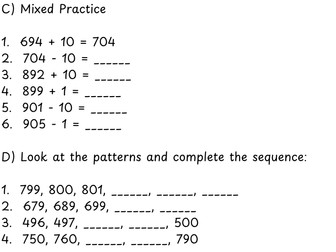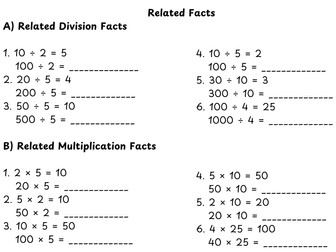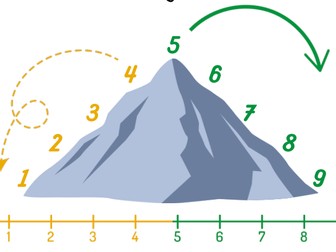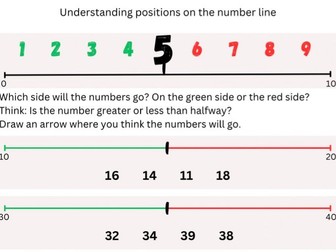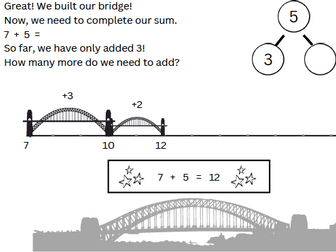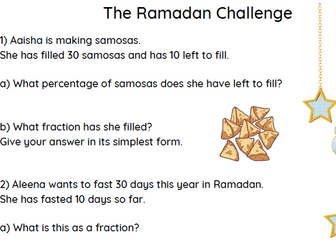Counting through hundreds in 1s and 10s
<p>Counting Through Hundreds Worksheet</p>
<p>This “Counting Through Hundreds” worksheet is designed for early Key Stage 2 students to strengthen their understanding of counting forwards and backwards through hundreds, focusing on addition and subtraction of 1s and 10s. It includes a mix of exercises and word problems to build fluency in these skills.</p>
<p>Key Features:</p>
<ol>
<li>Section A & B: Simple fill-in-the-blank exercises where students practice adding or subtracting by 10s and 1s, respectively, from three-digit numbers.</li>
<li>Section C: A mixed practice section that combines adding and subtracting by both 1 and 10, reinforcing place value concepts.</li>
<li>Section D: Sequence completion taskS that help students identify and extend numerical patterns.</li>
<li>Word Problems: Real-life contextual problems, such as counting marbles or stickers, which require students to apply their counting skills to solve addition and subtraction problems- ONE STEP AND TWO STEP PROBLEMS.</li>
</ol>
<p>Educational Value:<br />
Focus on Place Value: The worksheet reinforces understanding of how place value works when crossing into new hundreds.<br />
Sequential Logic: It encourages students to develop logical reasoning through patterns.<br />
Real-Life Application: The word problems help students see the relevance of math in everyday contexts.</p>
